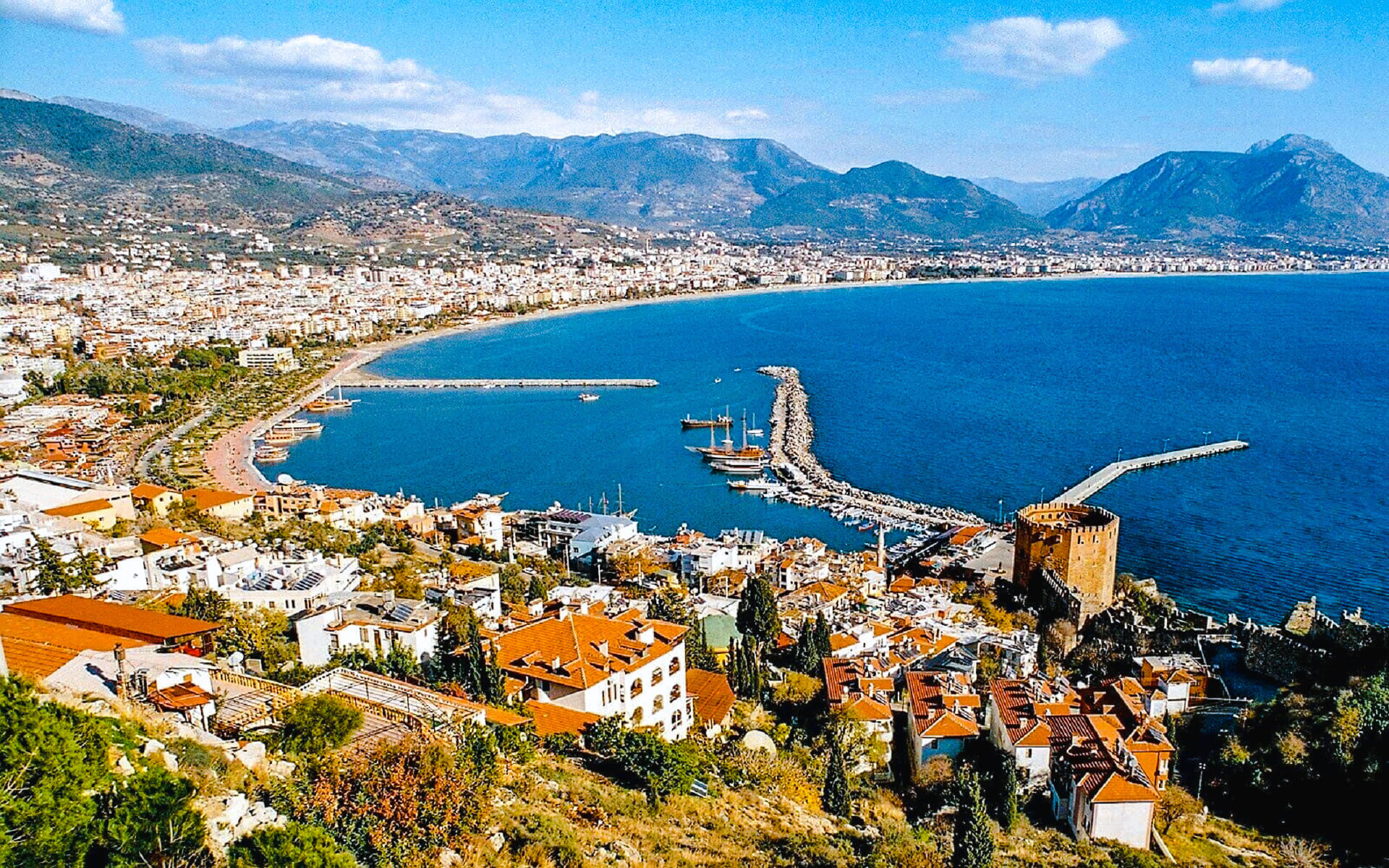Since the first modern motel was erected in 1958, considered the beginning of the tourism sector in Alanya, hotels have rushed to meet the inflow of travelers, and the city now has 157,000 hotel beds as of 2007. Damlataş Cave, which initially drew foreigners because of its microclimate, with an average temperature of 72 °F (22 °C) and 95 percent humidity, is accessible on the peninsula’s west side through paths from Damlataş Beach. During the summer months, Alanya attracts a large number of visitors, particularly Scandinavians, Germans, Russians, and Dutch. They are lured to the region due of the low property costs, the mild weather, the sandy beaches, the proximity to Antalya’s ancient monuments, and the superb food.
Wind surfing, parasailing, and banana boating are among more outdoor tourist activities. Sealanya, Europe’s biggest waterpark, and Turkey’s largest go-kart track are among the attractions. The hunting season also draws some tourists to the area’s natural reserves for wild goat, pig, and partridge hunting.
Tourist seasons following 2005 have been poor for Alanya’s tourism business for a variety of reasons. Increased PKK violence, H5N1 bird flu discovered in Van, and the Mohammad cartoon issue were all implicated. Alanya authorities reacted with a number of public relations activities, including producing the world’s largest cake on April 26, 2006, setting a Guinness World Record. The economy has also suffered as a result of over 20,000 excess homes being invested in. Israeli visitors, who typically arrive by cruise ship, dropped by roughly 85 percent between 2009 and 2011, owing in part to deteriorating ties between Turkey and Israel.
MAIN SIGHTS
Alanya Castle, a Seljuk medieval castle dated from 1226, located on the peninsula. The majority of the city’s prominent landmarks may be located within and around the castle. The present castle was erected on top of previous fortifications and functioned as both a palace of local governance and a defensive construction in the event of an invasion. The city started restoring several areas of the castle area in 2007, including converting a Byzantine church into a Christian community center. Suleiman the Magnificent erected the Süleymaniye mosque and caravanserai within the citadel. The historic city walls, which encircle part of the eastern peninsula, can be traversed. Within the fortifications are several ancient homes, most of which were erected in the early nineteenth century and are beautifully maintained specimens of classical Ottoman architecture.
The Kzl Kule (Red Tower) is a 108-foot (33-meter) high brick structure that stands at the port below the castle and houses the local ethnographic museum. Sultan Kayqubad I invited architect Ebu Ali from Aleppo, Syria, to create the building in Alanya. The octagonal building, the last of Alanya Castle’s 83 towers, was built to guard the Tersane (dockyard) and is considered one of the greatest examples of medieval military architecture. The Tersane, an 187 by 131 foot (57 by 40 m) medieval drydock erected by the Seljuk Turks in 1221, is split into five vaulted bays with equilateral pointed arches. The Alara Castle and caravanserai near Manavgat, which was also constructed by Kayqubad, has been transformed into a museum and history center.
Atatürk’s House and Museum, which he visited on February 18, 1935, has been conserved in its original condition and is an example of the interior of a conventional Ottoman mansion, complete with 1930s items. The home was constructed in the “karniyarik” (stuffed eggplant) style between 1880 and 1885. Neighborhood councils often require bright colors and red roofs, which give the contemporary town a pastel light. The Alanya Museum is located inland from Damlataşh Beach and is housed in a 1967 Republican period structure.
Alanya is a member of the European Association of Historic Towns and Regions, which is located in Norwich. Alanya Castle and Tersane were nominated to the 2009 Tentative List after local authorities applied to designate them as UNESCO World Heritage Sites.


